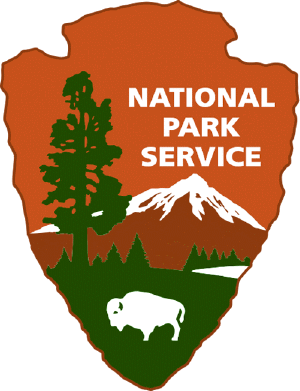 SKC Films Library SKC Films Library |
|
|
| SKC Films Library >> American History >> United States: General History and Description >> Description and Travel |
 National Park Service National Park Servicea bureau within the Department of the Interior charged with preserving the natural and historic resources of the United States In 1872, Congress set aside federal acreage at the headwaters of the Yellowstone River as "a public park or pleasuring ground for the benefit and enjoyment the people," thus establishing Yellowstone National Park as the first national park in the world. The National Park Service was established in 1916, when the park system consisted of 37 areas. Today, the system's parklands total more than 49,000 square miles -- an area larger than that of Pennsylvania. Every state except Delaware has at least one national parkland. The District of Columbia, Puerto Rico, and the Virgin Islands also have national parklands. The National Park System consists of more than 20 types of areas, including national parks, national monuments, and national historic sites. The different types of areas in the National Park System are preserved for three basic reasons: beautiful or unusual natural features, historic value, and/or attractive recreational features. Most national parks are preserved chiefly for the outstanding beauty or scientific importance of their natural features. Mesa Verde National Park, however, is preserved for its prehistoric Indian cliff dwellings. Many national monuments are preserved for unusual features. Among these are the Agate Fossils Beds, world-famous deposits of animal fossils; and Death Valley, a desert with strange and beautiful rock formations in the earth's crust. Death Valley also has the lowest land surface in the Western Hemisphere -- 282 feet below sea level. Areas preserved for their historic value include ancient ruins, such as the remains of Mound Builders' towns at Ocmulgee National Monument. Others honor important persons or events in the history of the United States. These areas include battlefields, forts, national cemeteries and memorials, and historic bridges, buildings, dams, canals, and farms. The most famous historical area is probably the White House. National recreation areas, national seashores, and national lakeshores provide land and water resources for outdoor activities. For example, 68 miles of white sand beaches and dunes line the Gulf of Mexico at Padre Island National Seashore. In other National Park System areas, such features as roads, trails, and water reservoirs have been developed to provide recreational opportunties. For example, one of the world's largest artificially-created lakes, 254.69-square mile Lake Mead, is a popular playground for water sports. Formed by Hoover Dam, the lake is part of the Lake Mead National Recreation Area. The park system also has cultural areas that provide attractive settings for fine arts performances. One such area is the Wolf Trap Farm Park for the Performing Arts in northeastern Virginia, which presents concerts and other fine arts programs in its 3,500-seat auditorium. The official website of the National Park Service is www.nps.gov. |
SKC Films Library >> American History >> United States: General History and Description >> Description and Travel |